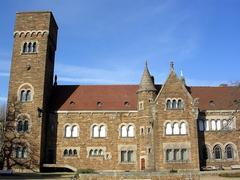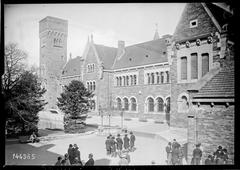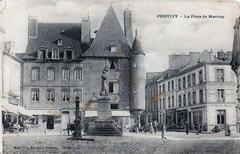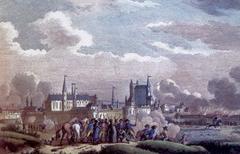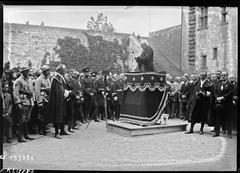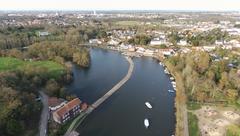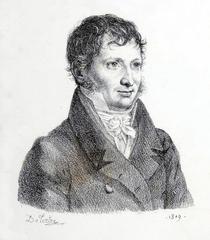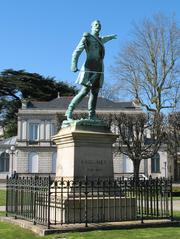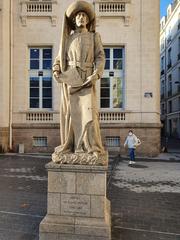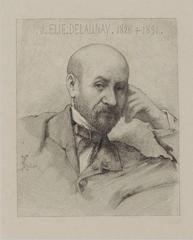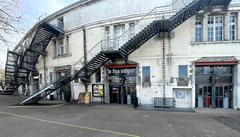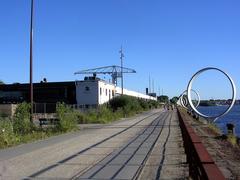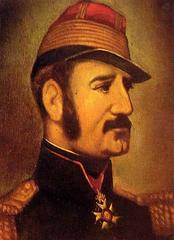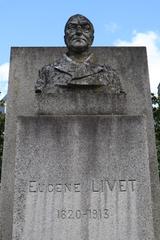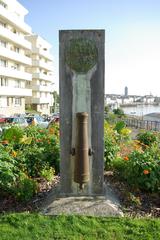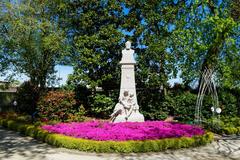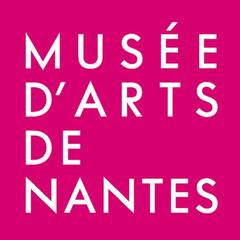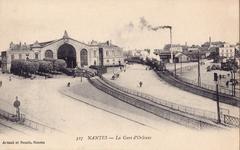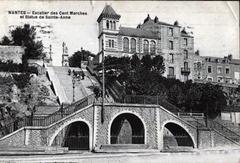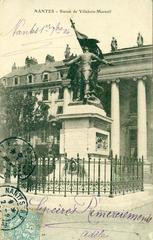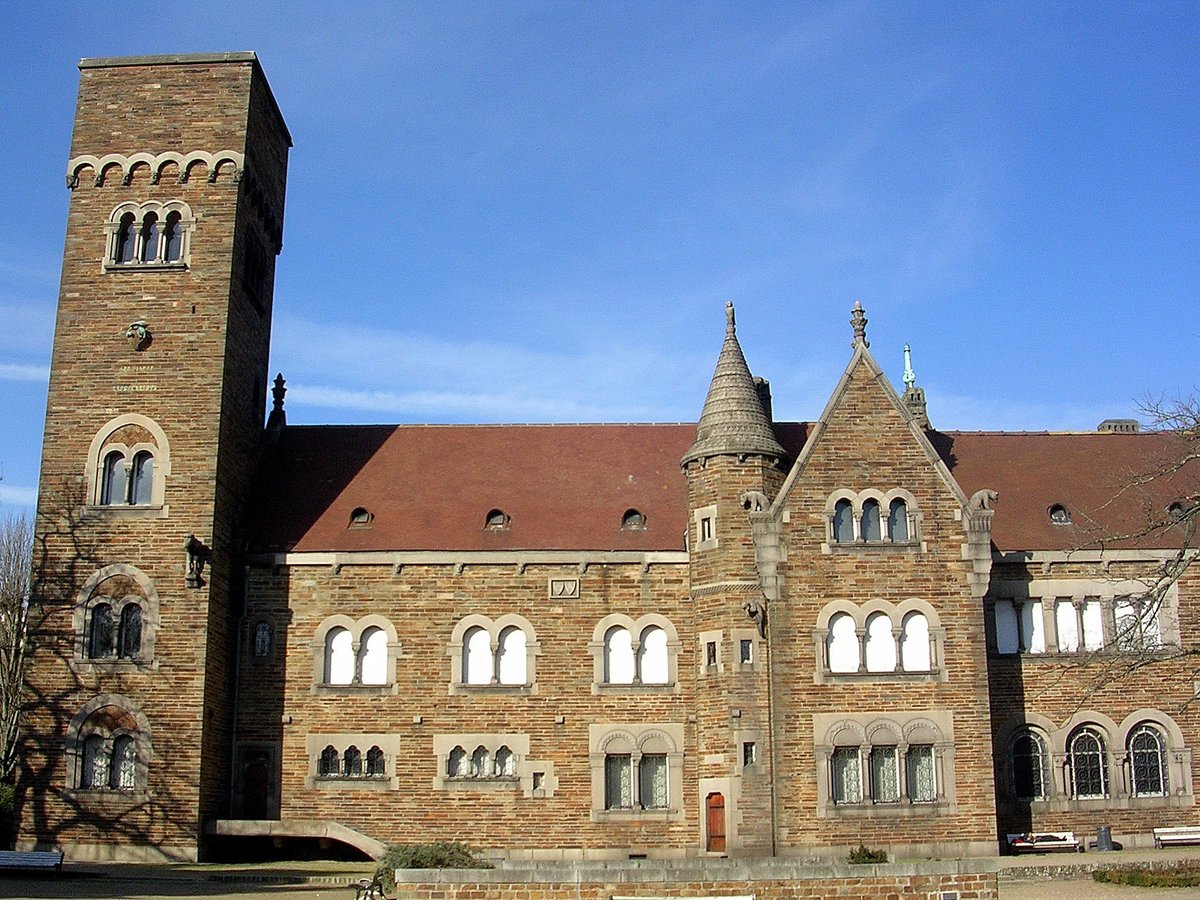
Musée Dobrée Visiting Hours, Tickets, and Nantes Historical Sites Guide
Date: 14/06/2025
Introduction to Musée Dobrée in Nantes
Located in the vibrant heart of Nantes, France, the Musée Dobrée stands as a testament to centuries of human creativity and cultural evolution. This landmark institution, born from the vision of 19th-century collector Thomas II Dobrée, brings together art, archaeology, and history under one architecturally remarkable roof. Following extensive renovations and its 2024 reopening, the museum now offers visitors access to over 2,400 displayed works, chosen from a collection of more than 130,000 items spanning prehistoric times to the 21st century.
This comprehensive guide details everything you need to know before visiting: up-to-date hours, ticket information, accessibility, highlights of the collections, architectural features, and travel tips for making the most of your Nantes cultural journey. Whether you are an art lover, history buff, or curious traveler, Musée Dobrée promises an enriching experience in one of the city’s most storied settings (Musée Dobrée – Histoire; Le Guide Nantes; Le Voyage à Nantes).
Table of Contents
- Discover Musée Dobrée: Nantes’ Treasure Trove of Art and History
- Historical Background
- Visitor Information
- Nearby Attractions and Nantes Historical Sites
- FAQs
- Architectural Highlights
- Must-See Collections
- Visitor Experience and Practical Tips
- Summary and Key Takeaways
- Sources
Discover Musée Dobrée: Nantes’ Treasure Trove of Art and History
In the heart of Nantes, the Musée Dobrée is a must-see for anyone interested in the intersection of art, history, and archaeology. This guide explores the museum’s origins, architectural evolution, and collections while offering practical guidance for planning your visit.
Historical Background
Origins and Founding Vision
The museum’s story begins with Thomas II Dobrée (1810–1895), who left behind a legacy as one of France’s great collectors. Born into a successful family of shipowners, Dobrée dedicated his resources to amassing an eclectic collection of fine and decorative arts, rare books, manuscripts, coins, and archaeological finds. In 1861, he acquired the Manoir de la Touche, a 15th-century manor, and soon began constructing his own neo-Romanesque palace—now known as the Palais Dobrée—to house his growing collection (Musée Dobrée – Histoire).
The Bequest and Early Museum Years
Dobrée’s will bequeathed his property and collections to the Département de Loire-Inférieure (now Loire-Atlantique), with the express wish that it become a public museum (Wikipedia). The museum opened its doors in 1899, combining Dobrée’s collection with archaeological holdings from the local historical society, and quickly became a cultural beacon for the region.
Architectural Evolution
The Musée Dobrée complex is an exceptional blend of eras and styles:
- Manoir de la Touche (15th century): Originally built for the bishops of Nantes, this manor is a rare relic of late medieval domestic architecture.
- Palais Dobrée (1862–1898): Designed in a neo-Romanesque style, this palace was envisioned by Dobrée himself.
- Modern Extensions: The Bâtiment Voltaire (1970s) and recent 21st-century renovations have expanded gallery space and modernized visitor amenities, seamlessly integrating the historic and the contemporary (Metropole Nantes).
Growth of the Collections
The museum’s holdings have grown through donations, bequests, and acquisitions, making it a “museum of collectors” with over 135,000 objects. Its archaeological collections are among the richest in western France, and the museum is celebrated for medieval manuscripts, coins, medals, and iconic treasures such as the Reliquary for the Heart of Anne of Brittany (WhichMuseum; Metropole Nantes).
Wartime and Modernization
During WWII, the museum’s most precious artifacts were evacuated for protection. The postwar era saw expansion, and by the early 21st century, modernization became necessary. A major renovation project (2011–2024) restored and adapted the historic buildings, improved accessibility, and enhanced exhibition spaces to meet contemporary standards (Metropole Nantes; Wikipedia).
The Musée Dobrée Today
Reopened in 2024, the museum embodies Thomas Dobrée’s vision and the cumulative work of generations of collectors and curators. It stands as a flagship institution within the Grand Patrimoine de Loire-Atlantique and offers an immersive experience across 500,000 years of human heritage (Wikipedia; Metropole Nantes).
Visitor Information
Location and Accessibility
- Address: 18 Rue Voltaire, 44000 Nantes, France
- Nearby Transport: Accessible via tram (lines 1 & 2, “Bouffay” or “Commerce” stops), bus (lines C3, C5, C6, “Dobrée” stop), and city bike stations. Public parking is limited, so public transport is recommended.
- Accessibility: The museum is fully wheelchair accessible, with elevators, ramps, and adapted restrooms (Musée Dobrée Accessibility).
Visiting Hours
- Tuesday–Sunday: 10:00 AM – 6:00 PM
- Closed: Mondays and public holidays
- Last admission: 45 minutes before closing (Musée Dobrée visiting hours)
Ticket Prices
- Adults: €8
- Reduced (students, seniors, unemployed): €5
- Children under 18: Free
- Family Pass: €18 (2 adults + up to 3 children)
- Free Entry: First Sunday of each month, residents under 26, and during certain events
- Online Purchase: Official ticketing
Guided Tours and Special Events
- Guided Tours: Available by reservation; options for various age groups and interests.
- Workshops: Regularly scheduled family-friendly activities.
- Special Exhibitions: Check the museum calendar for current and upcoming events.
Nearby Attractions and Nantes Historical Sites
- Château des ducs de Bretagne: Nantes’ iconic castle and history museum.
- Passage Pommeraye: A 19th-century shopping arcade and architectural gem.
- Nantes Cathedral: Gothic cathedral with centuries of history.
- Les Machines de l’île: An imaginative mechanical park inspired by Jules Verne.
Combine your visit to Musée Dobrée with these sites for a complete Nantes experience.
Frequently Asked Questions (FAQs)
Q: What are the opening hours?
A: Tuesday–Sunday, 10:00 AM–6:00 PM. Closed Mondays and public holidays.
Q: How much do tickets cost?
A: Standard €8, reduced €5, free for children under 18 and on select days.
Q: Is the museum accessible?
A: Yes, with step-free access, elevators, and adapted facilities.
Q: Are guided tours available?
A: Yes, in French and occasionally in English. Audioguides are available.
Q: Can I take photos?
A: Non-flash photography is permitted for personal use. Restrictions may apply for some exhibits.
Architectural Highlights
The Musée Dobrée complex is a masterful fusion of historical and modern architecture:
- Manoir de la Touche: Late medieval stone manor, now hosting temporary exhibitions (Paris1972-Versailles2003).
- Palais Dobrée: Neo-Romanesque palace with a 30-meter tower, grand staircases, and ornate stonework (Connaissance des Arts).
- Modern Extensions: 20th- and 21st-century additions for galleries and visitor services (Musée Dobrée).
- Anglo-Norman Gardens: Landscaped grounds for relaxation and exploration (Le Voyage à Nantes).
Must-See Collections
Highlights
- Reliquary for the Heart of Anne of Brittany: Renaissance goldsmith masterpiece, symbolic of regional identity (Le Voyage à Nantes).
- Albrecht Dürer Engravings: Featured in the new Cabinet d’arts graphiques, on view until June 2025 (Hello Gazette Nantes).
- Prehistoric and Ancient Artifacts: Mediterranean, Egyptian, Greek, and regional archaeological finds.
- Numismatic and Manuscript Collections: Thousands of coins, medals, rare books, and illuminated manuscripts.
- Decorative and Fine Arts: Furniture, jewelry, paintings, and sculpture from Europe and beyond.
- Arts Extra-Européens: African, Asian, Oceanic, and pre-Columbian treasures reflecting global curiosity (Musée Dobrée Collections).
Exhibition Layout
The permanent collections are displayed across 36 rooms and four floors in the Dobrée House, designed to evoke the spirit of a collector’s home. Thematic and chronological pathways guide visitors from prehistory to the modern era, with interactive elements for all ages (Le Voyage à Nantes).
Visitor Experience and Practical Tips
- Duration: Plan for 2–3 hours to fully enjoy the museum and gardens.
- Café and Boutique: On-site café with garden views and a shop offering books and souvenirs (Musée Dobrée).
- Wi-Fi: Free throughout the museum.
- Family-Friendly: “Musée Joyeux” label for engaging, child-friendly displays.
- Photography: Permitted without flash; restrictions may apply for temporary exhibits.
- Language: Main signage in French, with key information in English. Audioguides available.
- Advance Booking: Advised during weekends and special exhibitions.
- Nantes City Pass: Consider for bundled museum entry and public transport (Nantes City Pass).
- COVID-19: Check current guidelines on the official website.
Summary and Key Takeaways
The Musée Dobrée stands as a living testament to Nantes’ rich cultural heritage, offering a journey through art, history, and architecture. With its 2024 reopening, the museum has reaffirmed its status as a cultural cornerstone, providing a dynamic and accessible experience for visitors of all backgrounds. Take advantage of guided tours, the Audiala app for audio guides, and the tranquil gardens to enhance your visit. For those seeking to further explore Nantes, the museum’s central location and proximity to other major attractions make it an essential part of any itinerary (Musée Dobrée; Le Guide Nantes; Le Voyage à Nantes).
Sources and Official Links
- Musée Dobrée – Histoire
- Le Guide Nantes
- Le Voyage à Nantes
- Wikipedia – Musée départemental Thomas-Dobrée
- Musée Dobrée Official Website
For detailed visitor information, special exhibitions, and ticketing, always refer to the official Musée Dobrée website. Enhance your visit with the Audiala app, and explore related content for a truly immersive cultural journey in Nantes.
